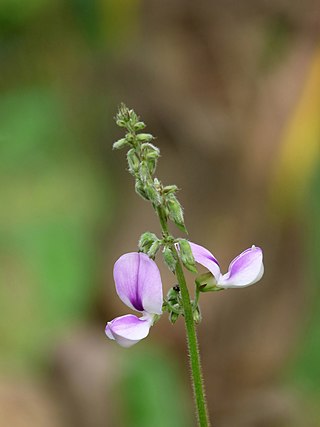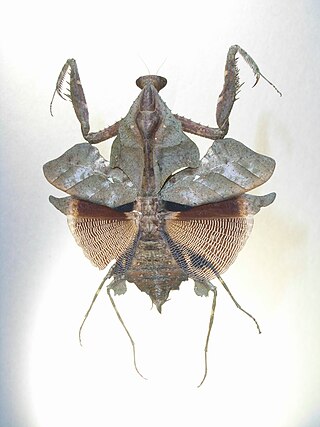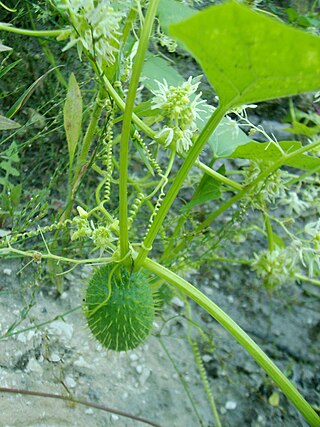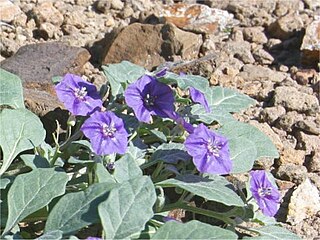Related Research Articles

Kudzu is a group of climbing, coiling, and trailing deciduous perennial vines native to much of East Asia, Southeast Asia, and some Pacific islands, but invasive in many parts of the world, primarily North America.

Lobata is a district of São Tomé and Príncipe, on São Tomé Island. Its area is 105 km2 (41 sq mi), and its population is 19,365 (2012). The district seat is Guadalupe. It is divided into the four statistical subdistricts Guadalupe, Santo Amaro, Conde and Micoló.

Pueraria is a genus of 15–20 species of legumes native to Asia. The best known member is kudzu, also called Japanese arrowroot. The genus is named after 19th century Swiss botanist Marc Nicolas Puerari.

Quercus lobata, commonly called the valley oak or roble, grows into the largest of California oaks. It is endemic to California, growing in interior valleys and foothills from Siskiyou County to San Diego County. Mature specimens may attain an age of up to 600 years. This deciduous oak requires year-round access to groundwater.
São Tomé and Principe Championship is the top division of the São Toméan Football Federation. In the current 2021/22 season there are 18 teams participating in two separate leagues - 12 teams from São Tomé Island, whose league has two relegation places, alongside 6 teams from Príncipe Island, which operates as a single division with no relegation.

Ipomoea lobata, the fire vine, firecracker vine or Spanish flag, is a species of flowering plant in the family Convolvulaceae, native to Mexico and Brazil.
The Kenyan big-eared free-tailed bat is a species of bat in the family Molossidae. It is found in Kenya and Zimbabwe. Its natural habitat is dry savanna.

Deroplatys lobata, common name Southeast Asian dead leaf mantis or dead leaf mantis, is a species of praying mantis that inhabits Thailand, Java, Borneo, Indonesia, Sumatra and the Malay Peninsula.

Deroplatys is a genus of mantis in the family Deroplatyidae. They are native to Asia and several share the common name of dead leaf mantis.

Daidzin is a natural organic compound in the class of phytochemicals known as isoflavones. Daidzin can be found in Japanese plant kudzu and from soybean leaves.

Puerarin, one of several known isoflavones, is found in a number of plants and herbs, such as the root of Pueraria notably of the kudzu plant.

Echinocystis is a monotypic genus in the gourd family, Cucurbitaceae. The sole species is E. lobata, commonly called wild cucumber, prickly cucumber or bur cucumber. It is an annual, sprawling plant that is native to North America.

Quincula is a monotypic genus of flowering plants in the nightshade family, Solanaceae. The sole species it contains, Quincula lobata, is commonly known as Chinese lantern, lobed groundcherry, or purple groundcherry.
Lobata is an unincorporated community in Mingo County, West Virginia, United States. Lobata is located on the Tug Fork and West Virginia Route 49, 5.2 miles (8.4 km) east-southeast of Williamson. Lobata had a post office, which closed on July 1, 1989.

Urena lobata, commonly known as Caesarweed or Congo jute, is a tender perennial, variable, erect, ascendant shrub or subshrub measuring up to 0.5 meters (1.6 ft) to 2.5 meters (8.2 ft) tall. The stems are covered with minute, star-like hairs and often tinged purple. Considered a weed, it is widely distributed in the tropics, including in Brazil and Southeast Asia.

Porites lobata, known by the common name lobe coral, is a species of stony coral in the family Poritidae. It is found growing on coral reefs in tropical parts of the Indian and Pacific Oceans.

Sybra is a genus of beetles in the family Cerambycidae, containing the following species:

Sybra ordinata is a species of beetle in the family Cerambycidae. It was described by Henry Walter Bates in 1873.

Mirificin, also known as daidzein 8-C-(6-apiofuranosylglucoside), is an isoflavone that is found in Pueraria mirifica and Pueraria lobata. It has estrogenic activity and hence is a phytoestrogen.

Pueraria montana var. lobata, the East Asian arrowroot, or kudzu vine, is a perennial plant in the family Fabaceae.
References
- ↑ BioLib.cz - Sybra lobata. Retrieved on 8 September 2014.